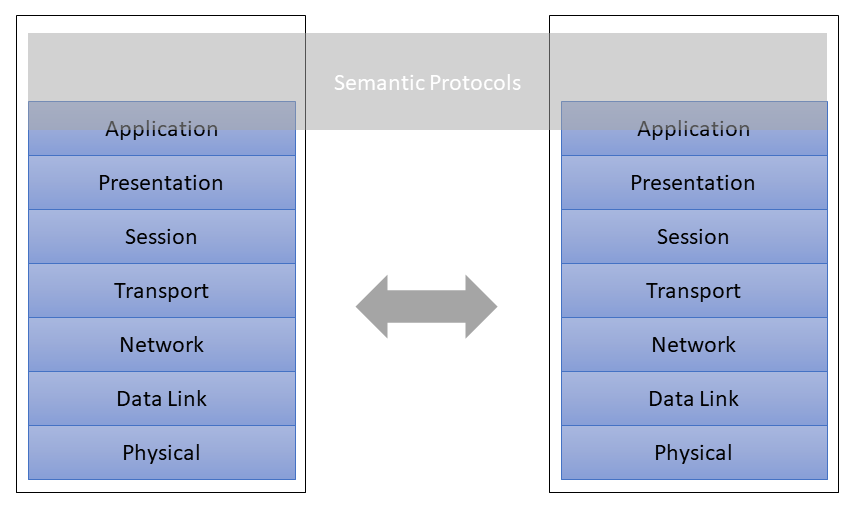Semantic Protocols
A protocol in the information technical sense - also named communication protocol - is an amount of formal defined regulations, which are related to the data exchange between IT systems.These regulations contain formats for the composition of messages (syntax) and rules for the sequence of the message exchange (semantics).
To enable the communication between IT systems, different tasks must be fulfilled, which are adopted by implementations of different protocols. The entirety of all necessary protocols for the communication is named as protocol stack. The different functionalities of the protocols interlock in such a way that they are considered as adjacent layers. The ISO ISO reference model is a possibility to define amount, position and purpose of these layers.
Semantic protocols are often referred to as those that regulate the application-related aspects of the communicating IT systems, which, due to their complexity, can no longer be meaningfully assigned to layer 7 of the ISO-OSI reference model. These aspects may include, for example, the process of automated allocation of tasks between facilities of an industrial production site.
The chair works on fundamental concepts for the handling of semantic protocols as well as the elaboration of concrete semantic protrocols for different operational areas to enable semantic interoperability between technical systems.

Figure: By „Semantic Protocols“ enhanced ISO OSI reference model, source: OvGU